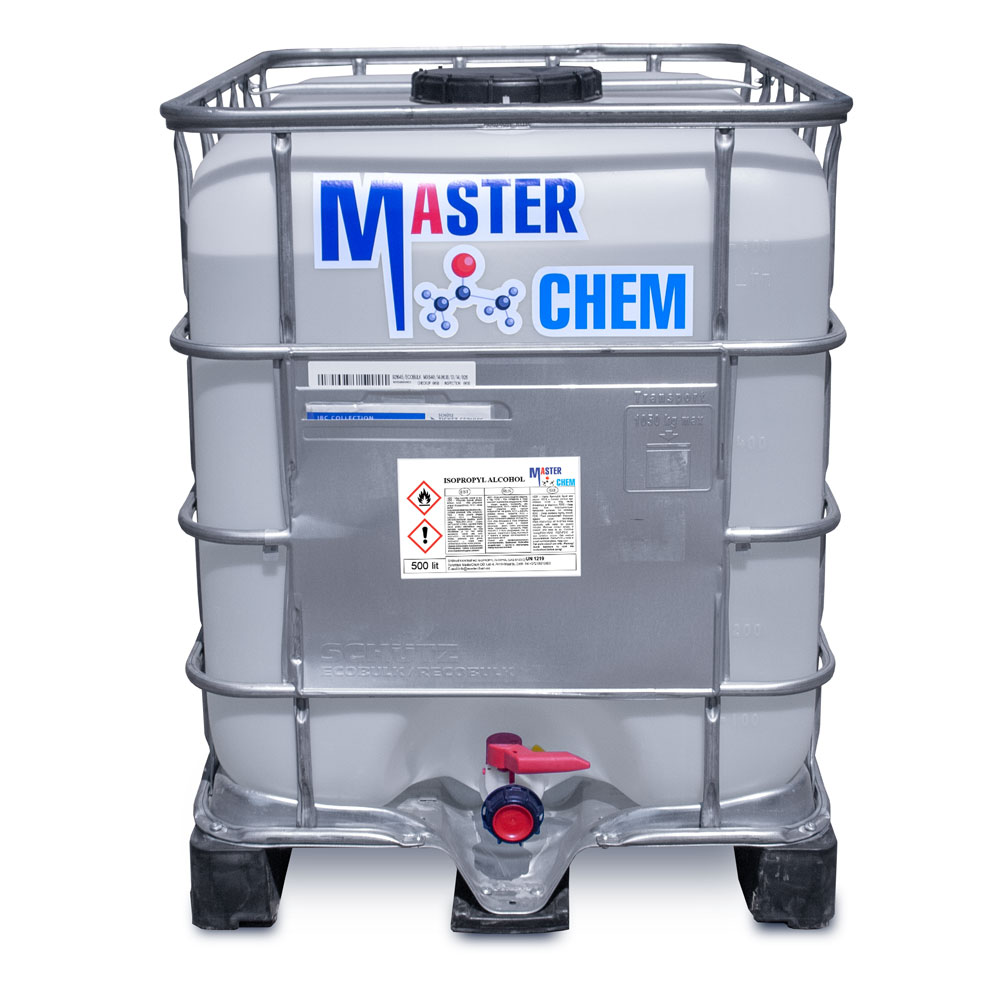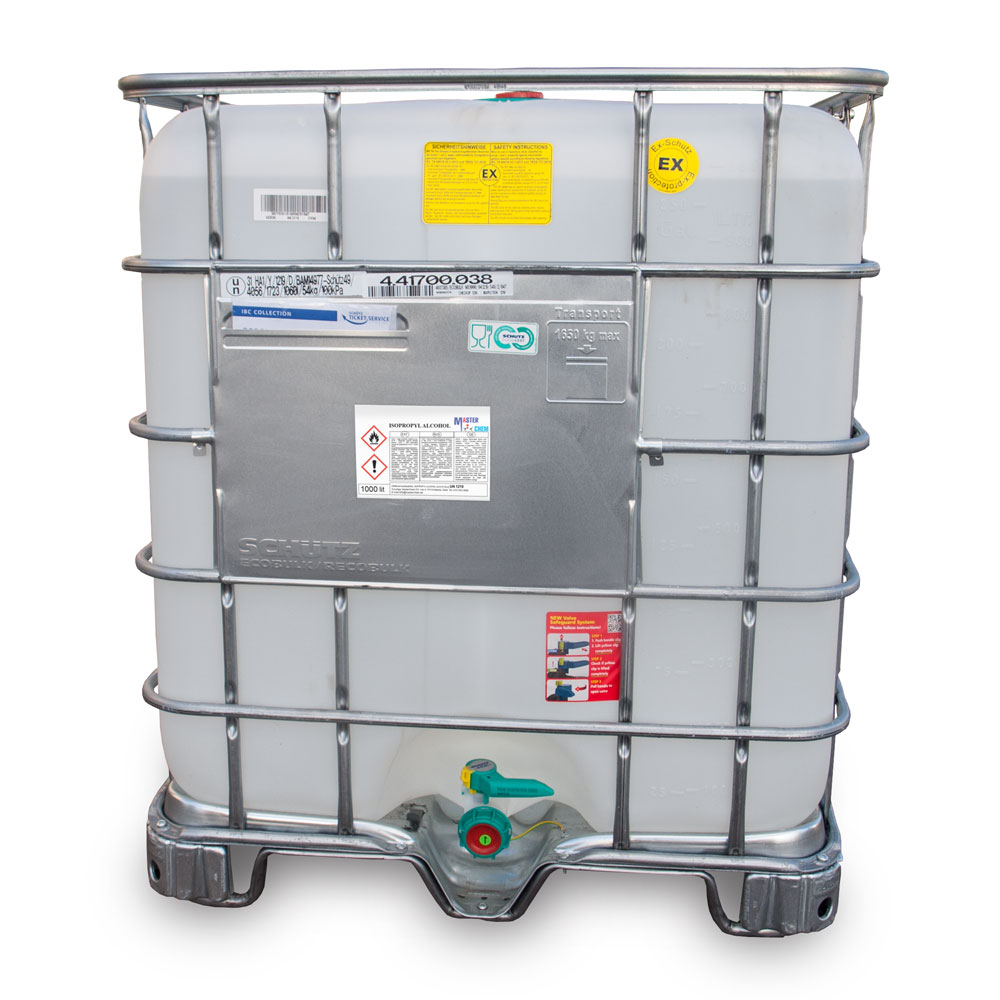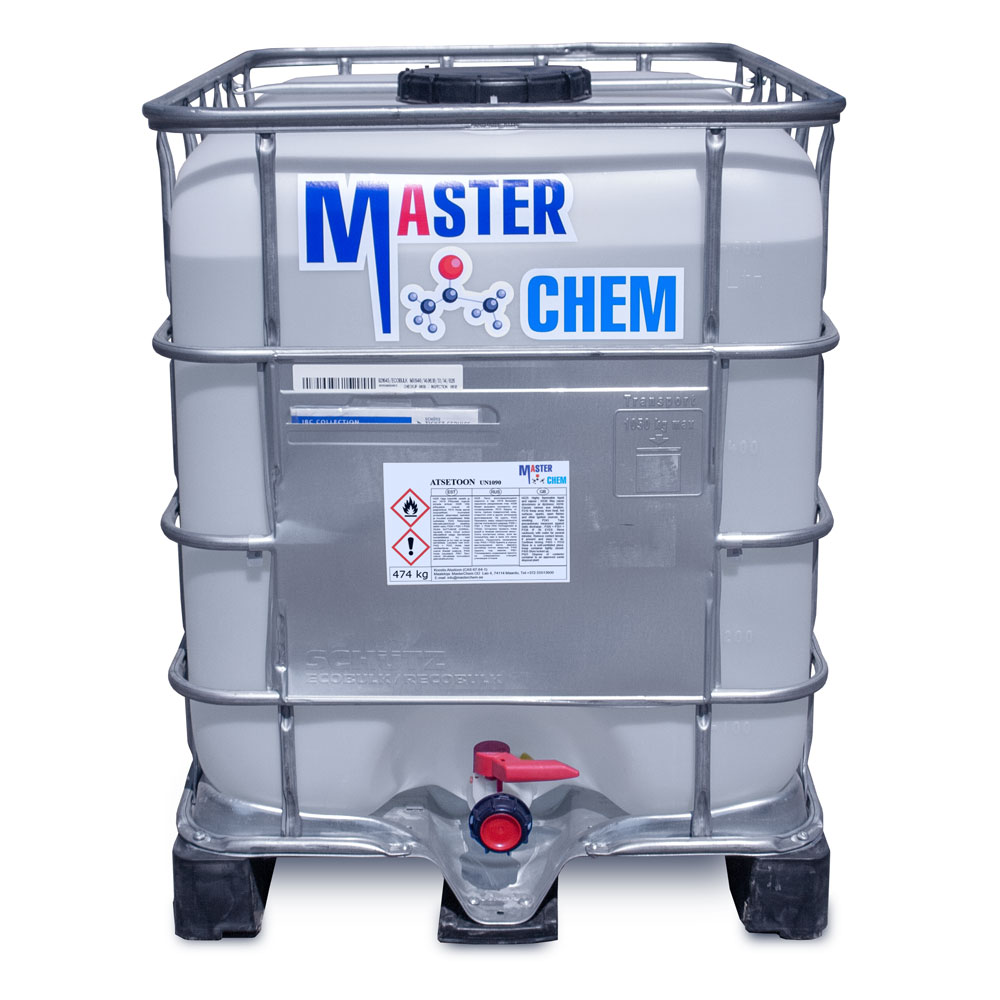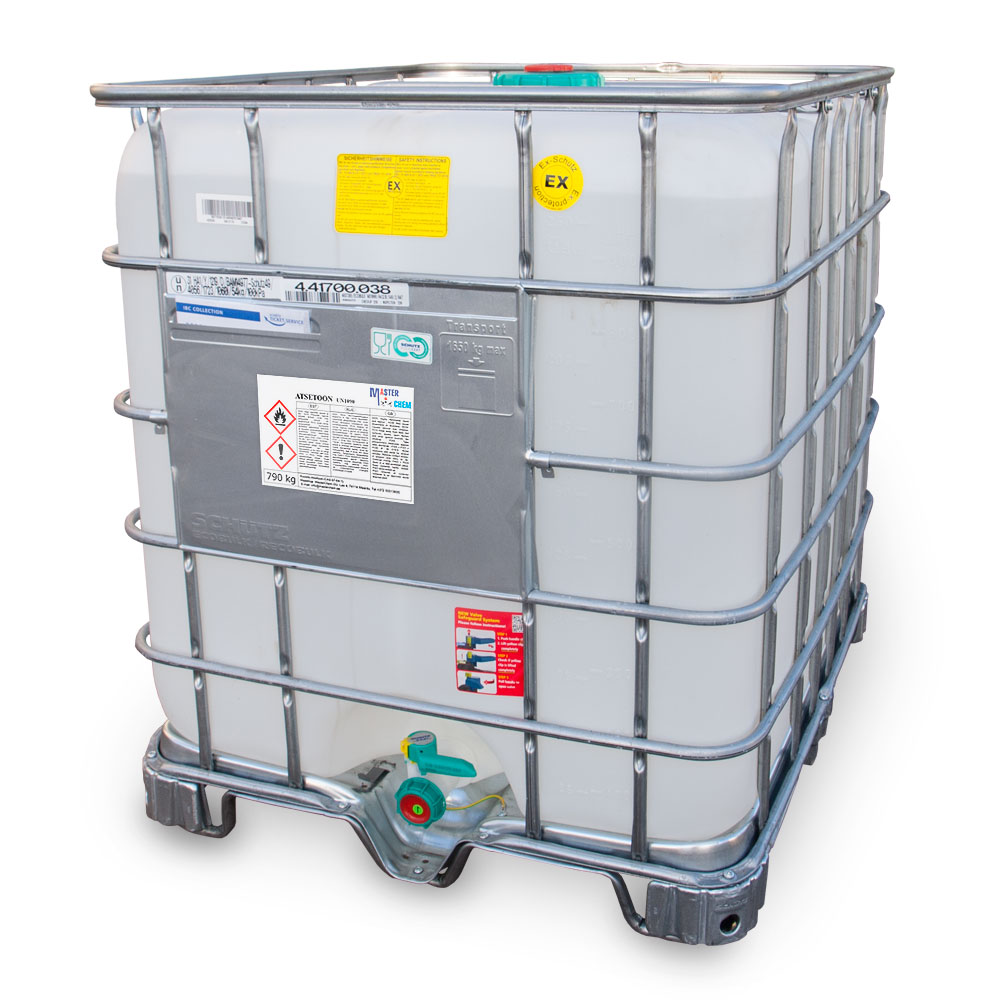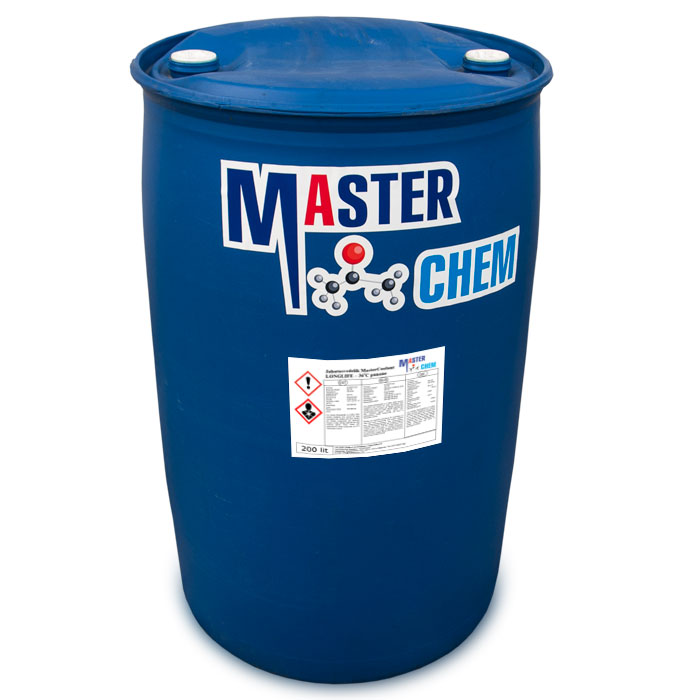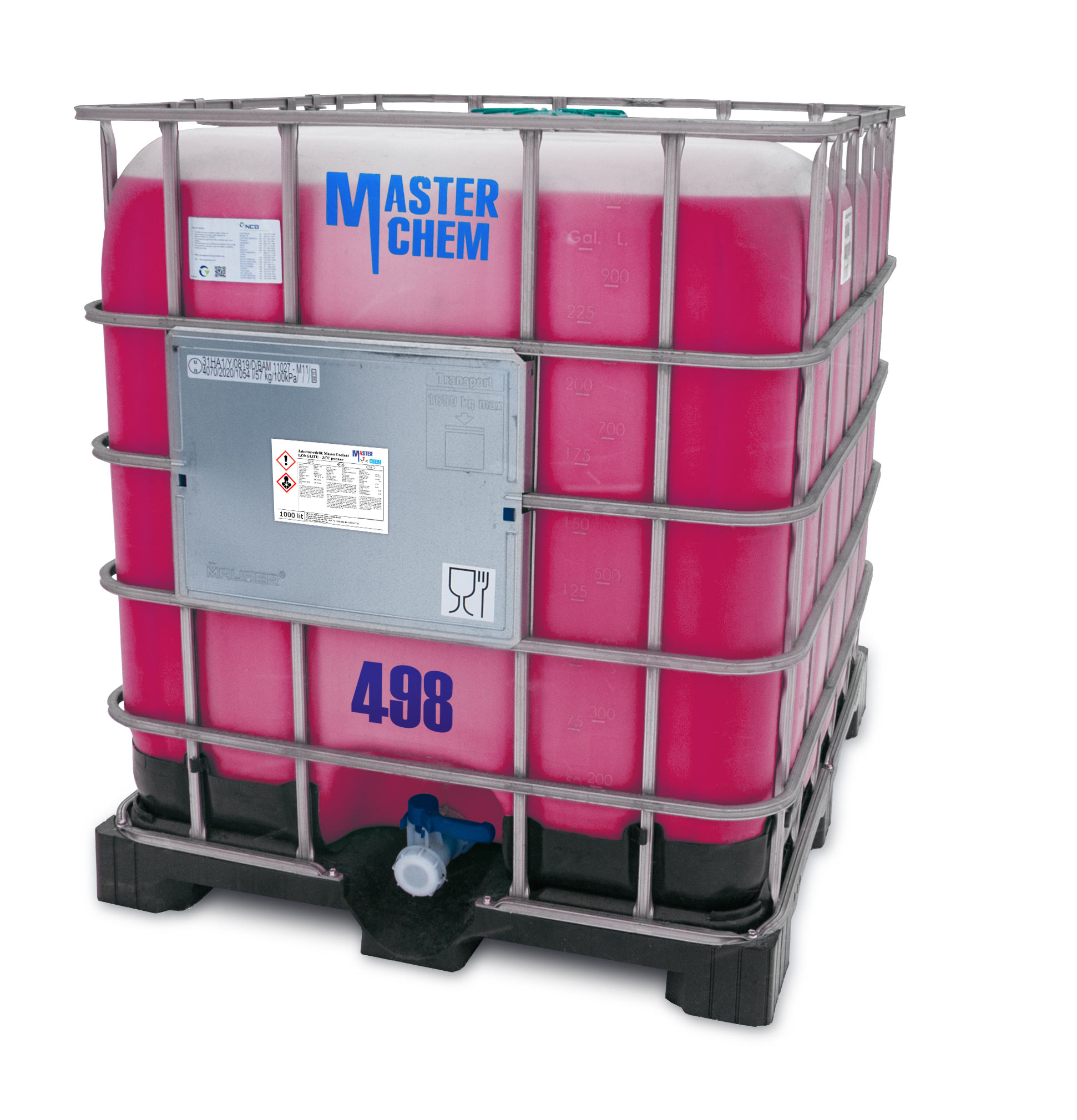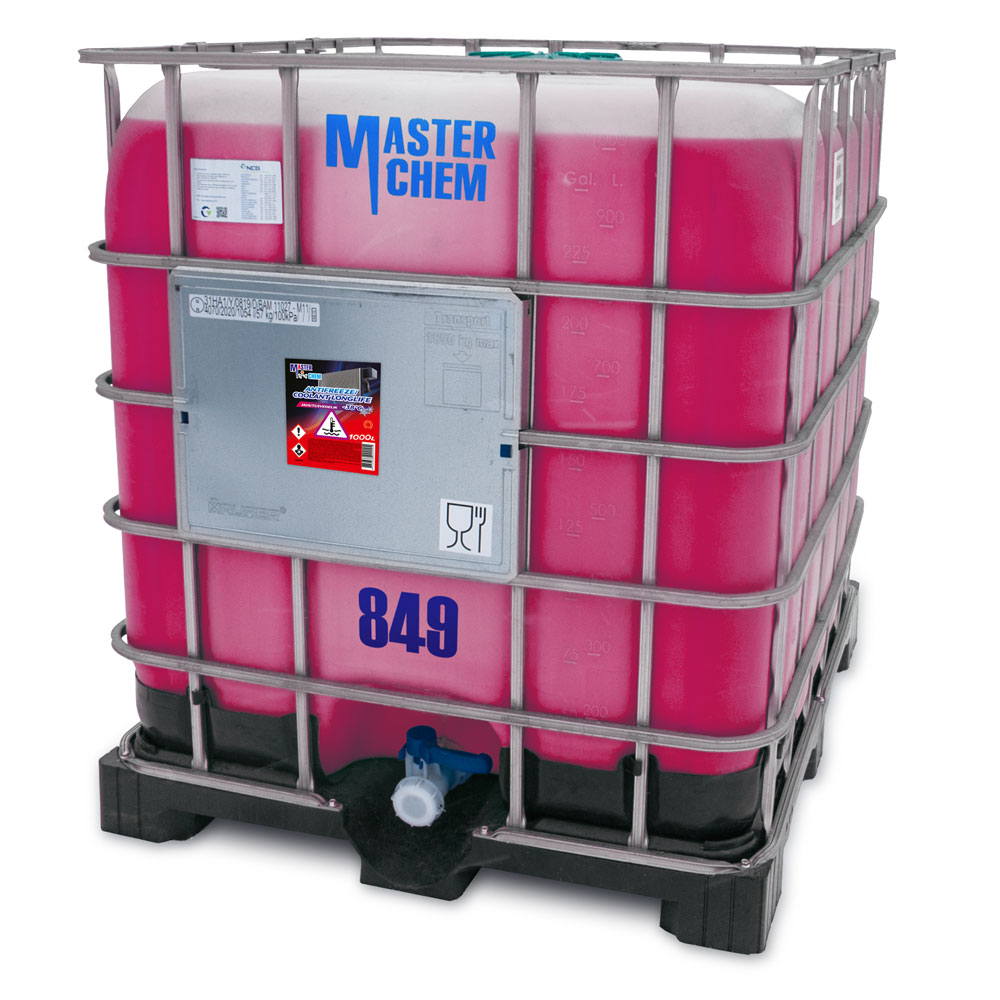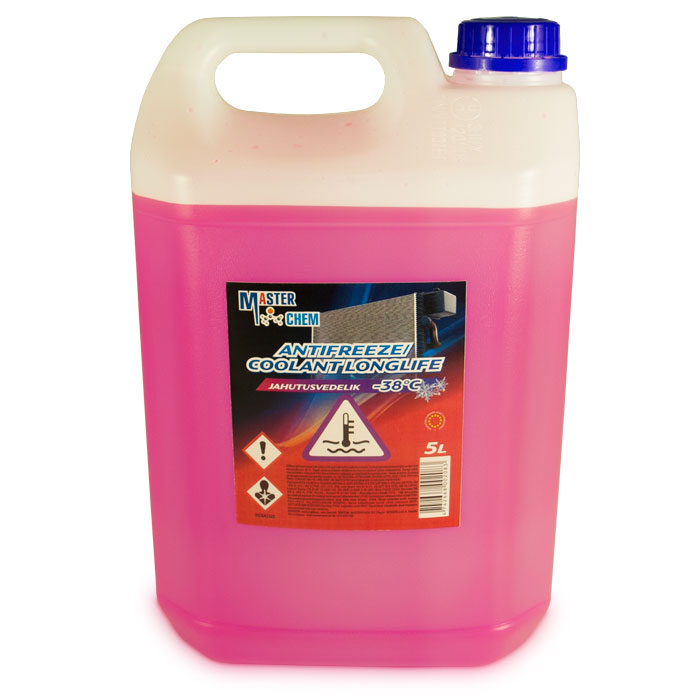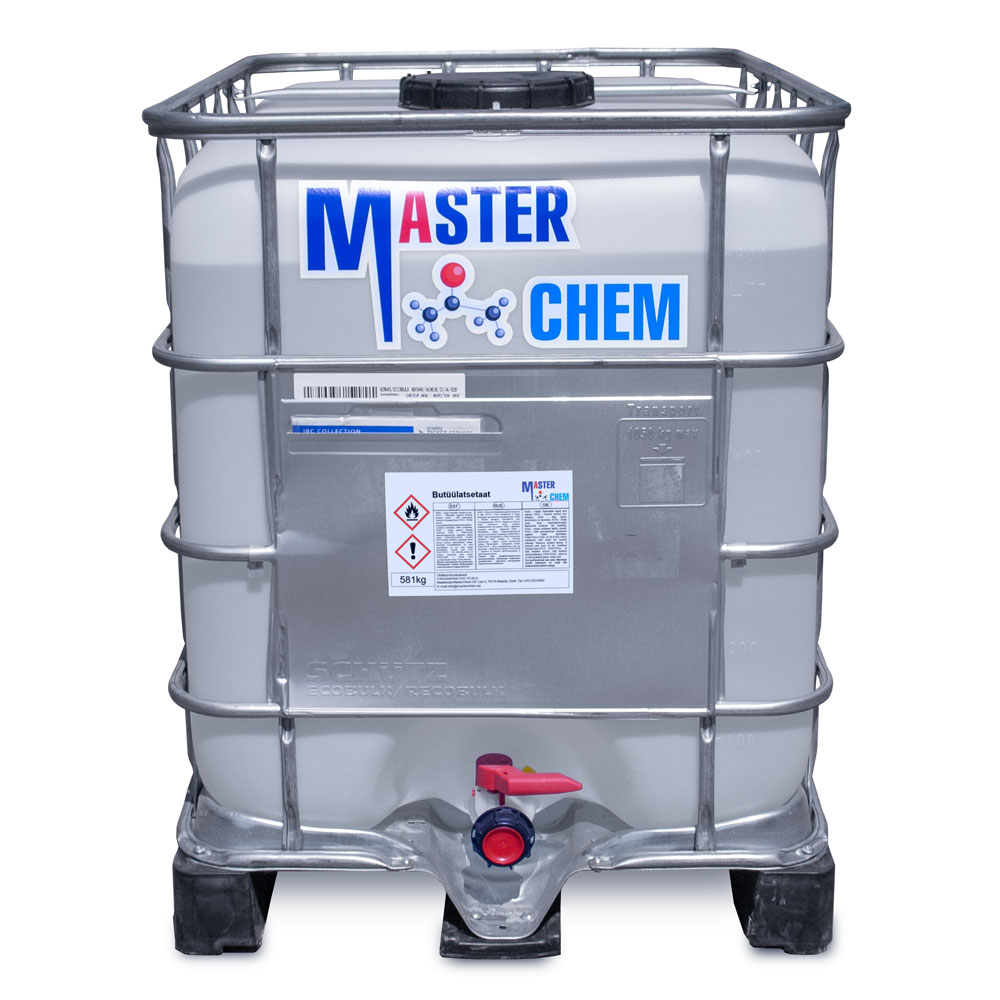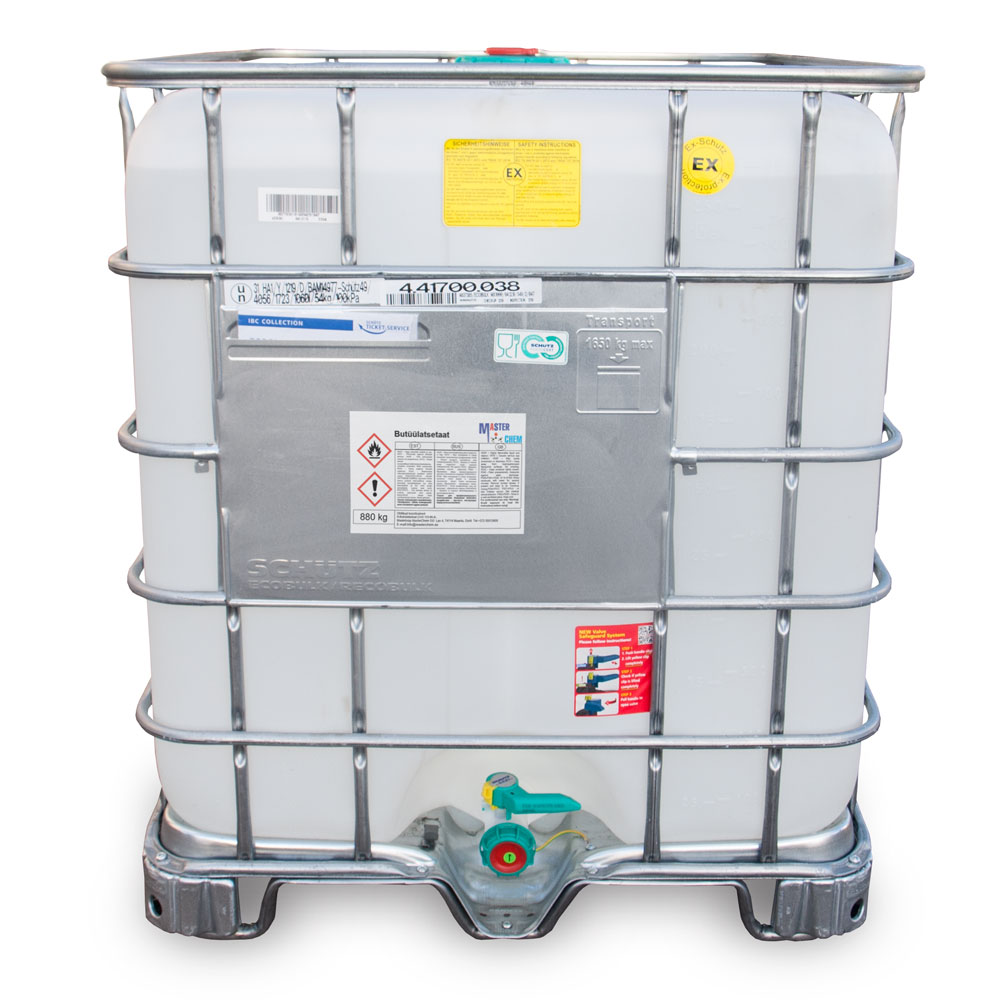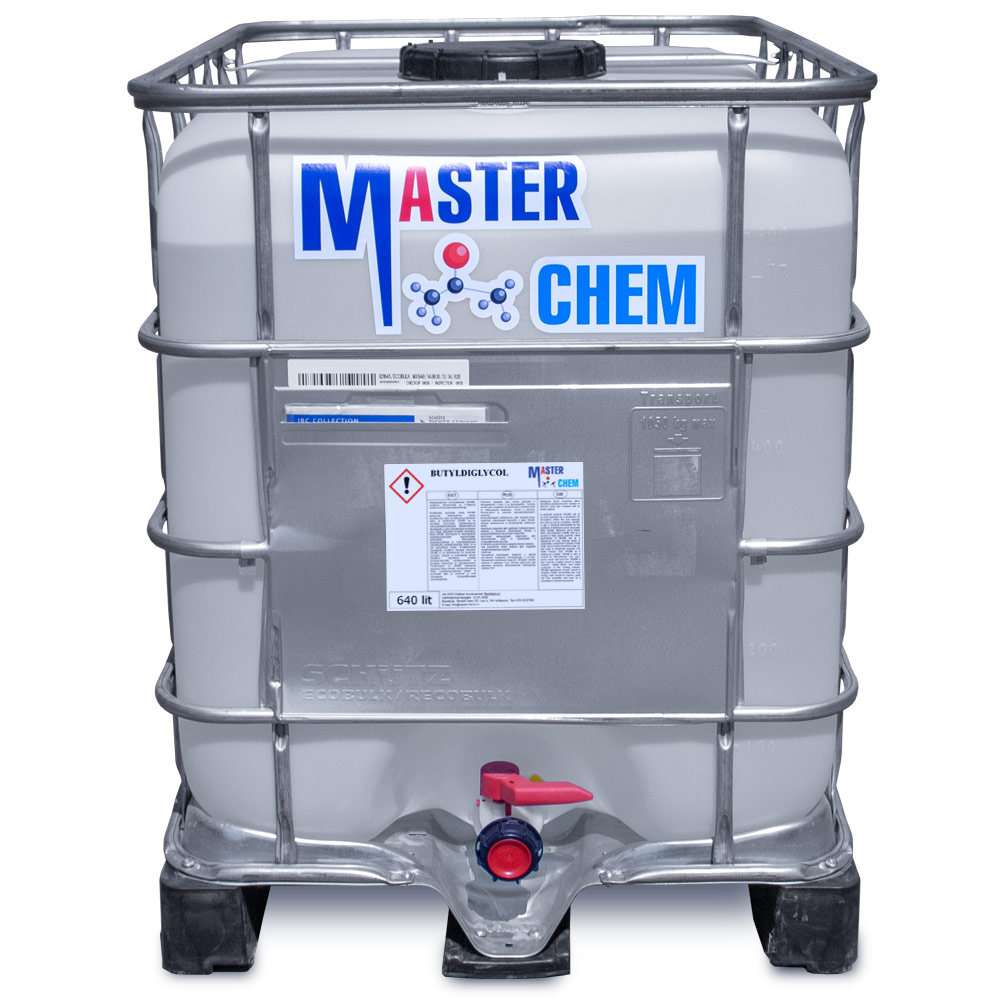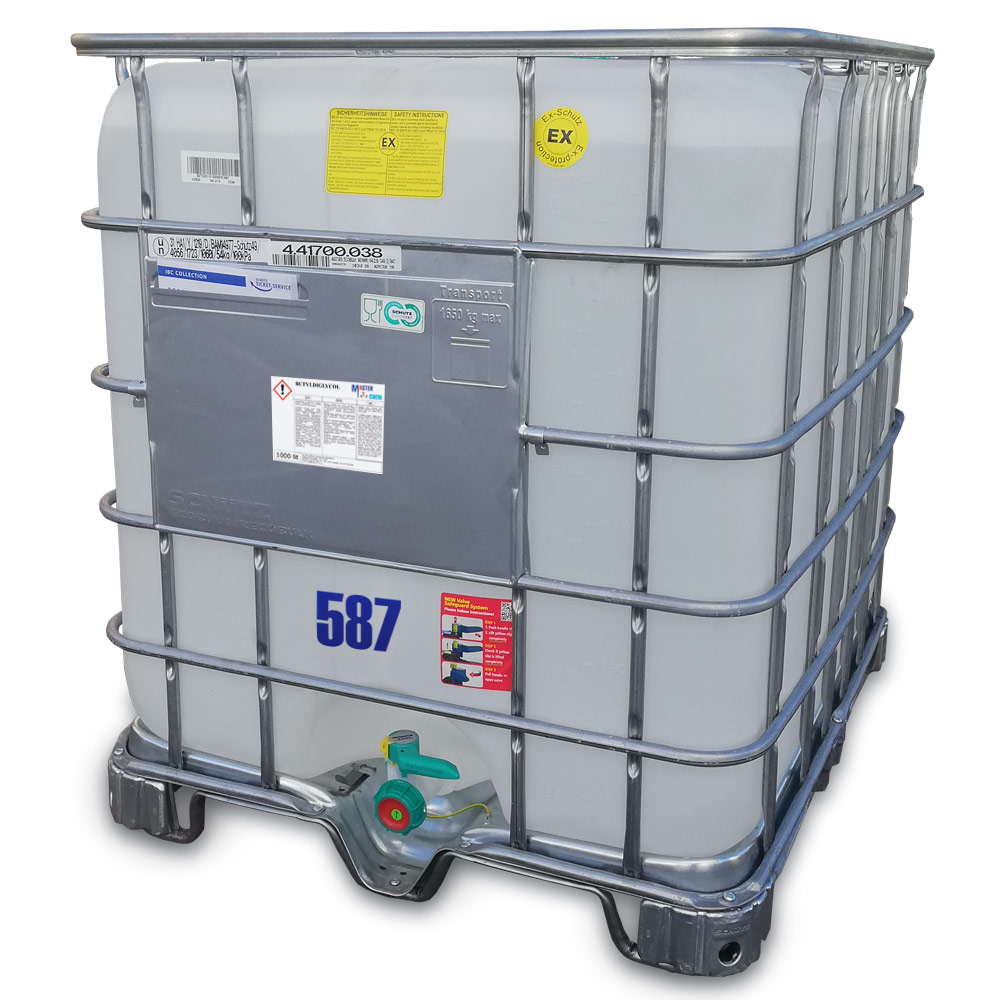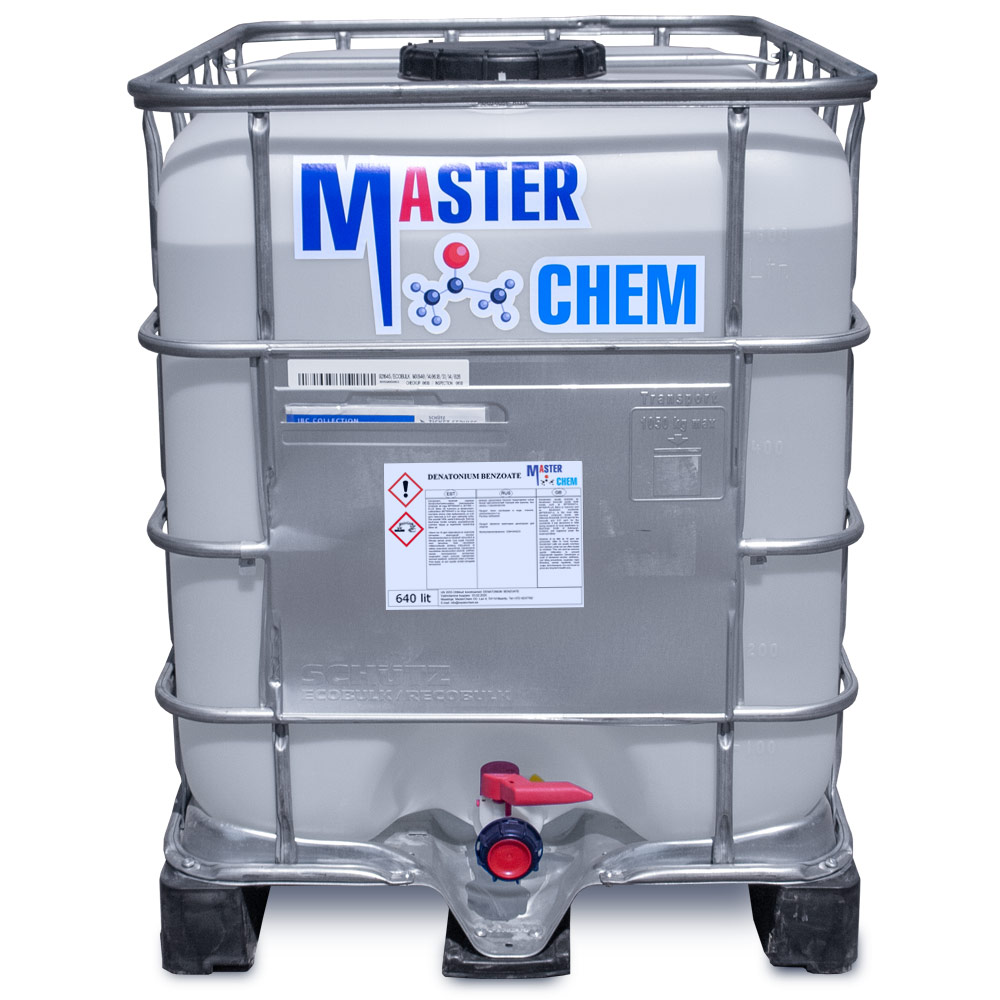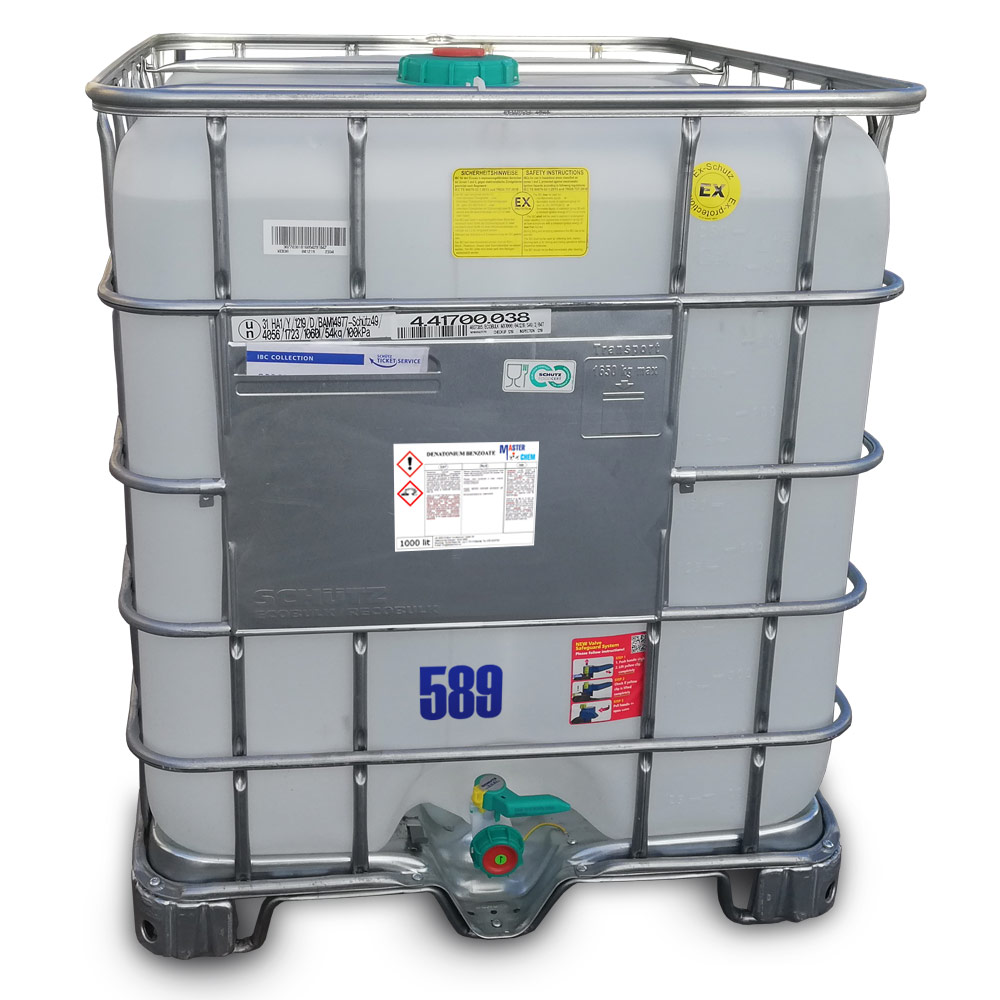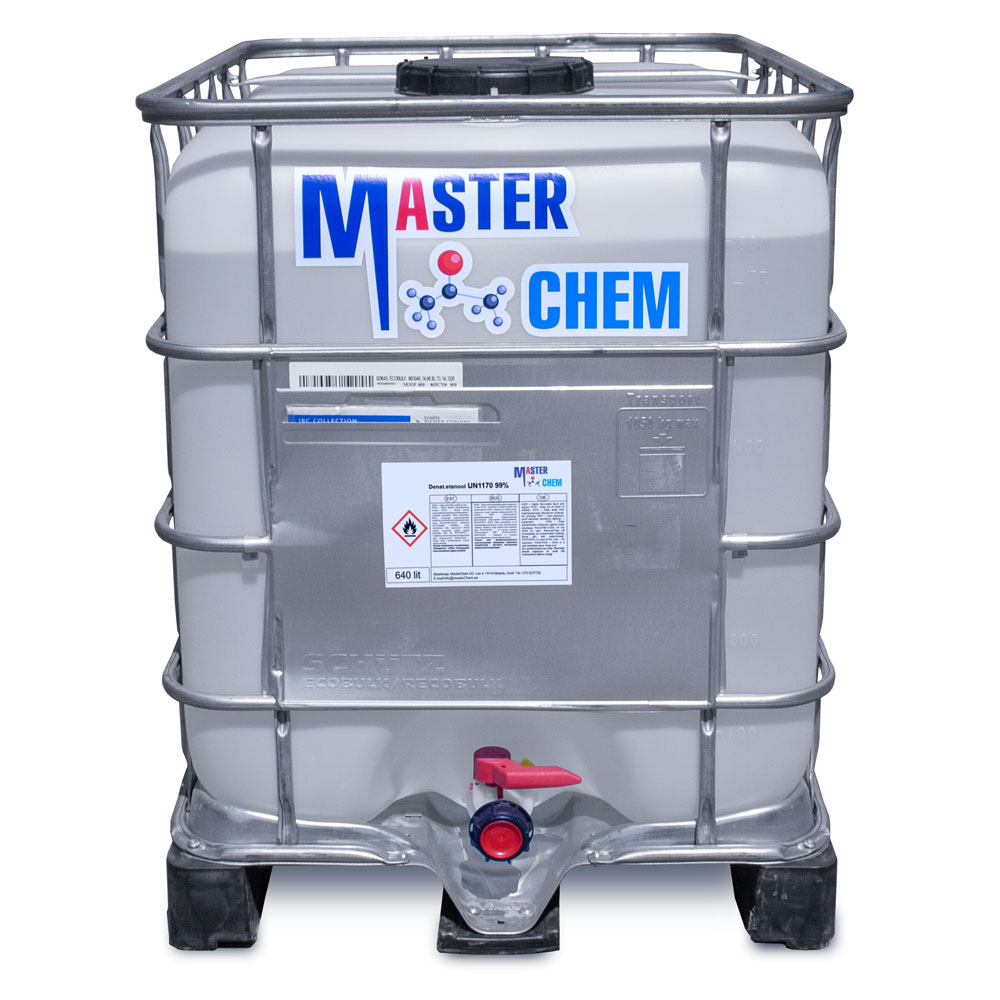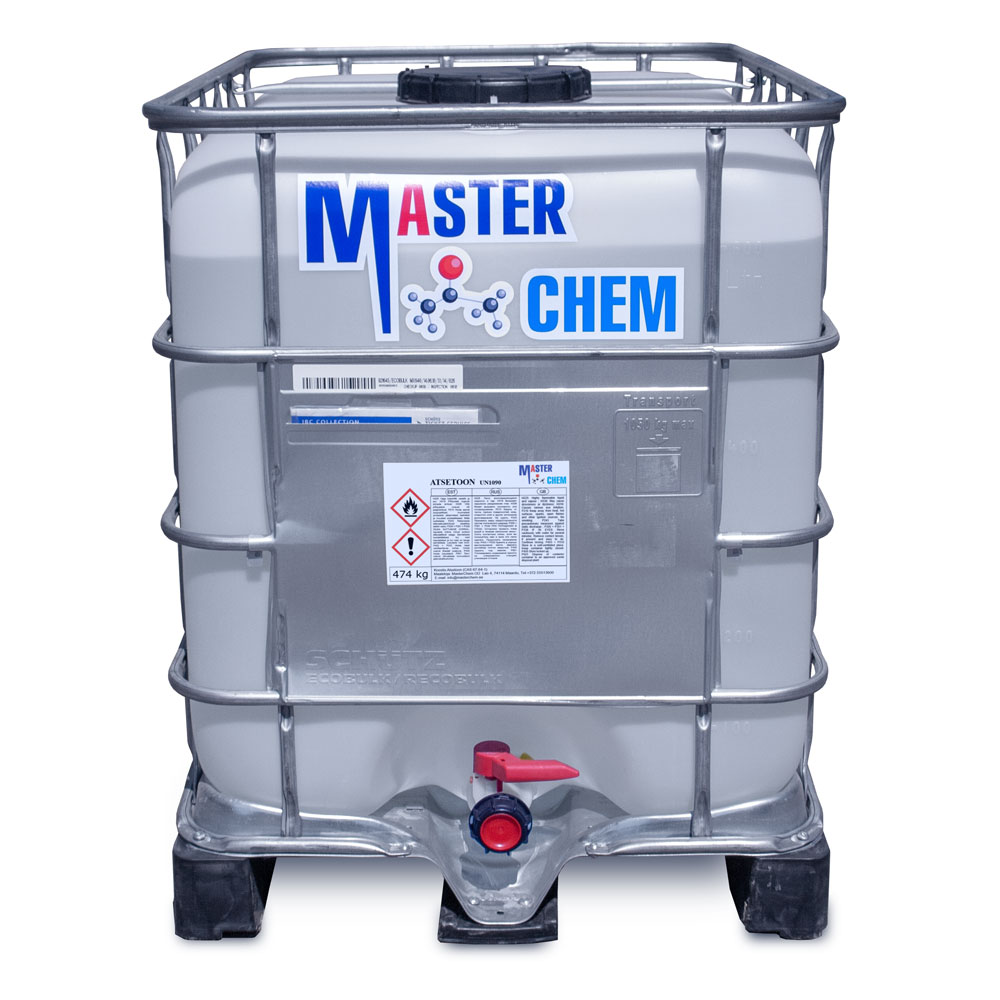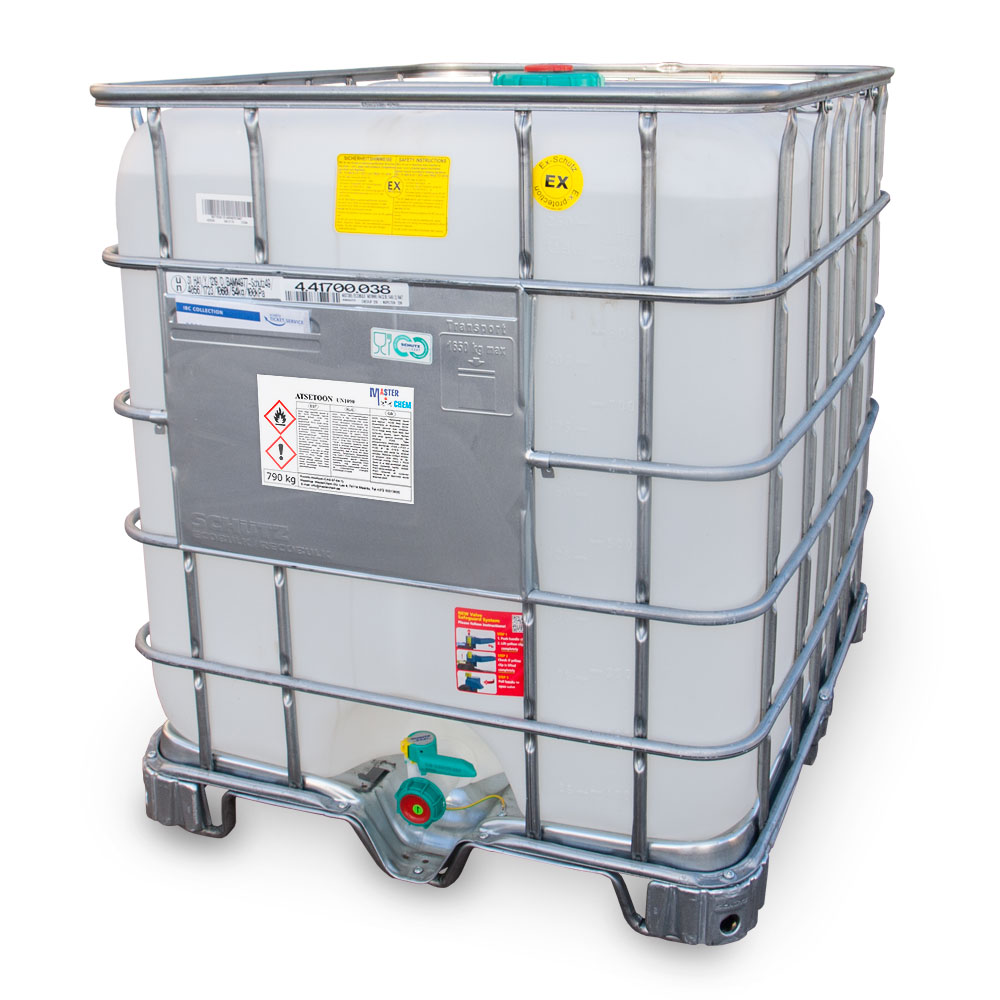Currently Empty: €0.00
2-Propanol (CAS 67-63-0)
Other names: Isopropyl alcohol, 2-Propanol, Isopropanol[1], Rubbing alcohol, sec-Propyl alcohol, s-Propanol, iPrOH, i-PrOH, Dimethyl carbinol, IPA
Isopropyl alcohol (IUPAC name propan-2-ol; commonly called isopropanol) is a compound with the chemical formulaC3H8O. It is a colorless, flammable chemical compound with a strong odor. As an isopropyl group linked to a hydroxylgroup, it is the simplest example of a secondary alcohol, where the alcohol carbon atom is attached to two other carbon atoms. It is a structural isomer of 1-propanol. It is manufactured for a wide variety of industrial and household uses, and is a common ingredient in chemicals such as antiseptics, disinfectants and detergents.
Acetone (CAS 67-64-1)
Other names: Acetone, Dimethyl ketone, Dimethyl carbonyl, β-Ketopropane, Propanone, 2-Propanone, Dimethyl formaldehyde, Pyroacetic spirit (archaic), Ketone propane.
Acetone is miscible with water and serves as an important solvent in its own right, typically for cleaning purposes in laboratories. About 6.7 million tonnes were produced worldwide in 2010, mainly for use as a solvent and production of methyl methacrylate and bisphenol A. It is a common building block in organic chemistry. Familiar household uses of acetone are as the active ingredient in nail polish remover, and as paint thinner.
CAS: 67-64-1
Antifreeze MasterCoolant LONGLIFE – 36°C red
Trade name: Antifreeze MasterCoolant LONGLIFE – 36°C red
MasterCoolant EXTRA LONGLIFE – 38 ° C – high-efficiency, extended-life cooling fluid developed for optimal heat exchange and long-term protection of cooling systems of stationary gas engines and for most types of engines used in construction, quarrying, agricultural, railway and marine machinery.
Carboxylate additive technologies developed for high-efficiency system protection with maximum period of failure-free operation in a wide range of operating conditions.
Distinctive features
• Silicate-free composition provides improved heat exchange
• Helps reduce calcareous and phosphate deposits
• Provides up to 32000 hours of operation
• Promotes long-term protection of pump seals and corrosion protection
• Designed to work with limited service capabilities
Conforms to next standards:
ASTM D3306, ASTM D4985, BS 6580 (2010), UNE 26361-88, NATO S759, Ford ESE M97B49-A, WSS-M97B44-D & ESD M97 B49-A, G13, VW TL 774-F, GM 6277M, Mercedes MB 325.3, DAF 74002, DD93K217, MAN 324 Typ SNF, GMW 3420, Volvo VCS 418-000, Scania TI 2-98 0813 TB, Wartsila 32-9011
Does not damage rubber or plastic parts. Made in MasterChem.
Antifreeze MasterCoolant LONGLIFE – concentrate
Trade name: Antifreeze MasterCoolant LONGLIFE concentrate red
Ready-to-use coolant for vehicles is intended for use in all types of modern cooling systems, as specified by the vehicle manufacturer. Protects the cooling system at temperatures above -36 ° Conforms to next standards:
ASTM D3306, ASTM D4985, BS 6580 (2010), UNE 26361-88, NATO S759, Ford ESE M97B49-A, WSS-M97B44-D & ESD M97 B49-A, G13, VW TL 774-F, GM 6277M, Mercedes MB 325.3, DAF 74002, DD93K217, MAN 324 Typ SNF, GMW 3420, Volvo VCS 418-000, Scania TI 2-98 0813 TB, Wartsila 32-9011
PRODUCT DILUTION AND BOIL OVER PROTECTION RECOMMENDATIONS FOR HAVOLINE XTENDED LIFE ANTIFREEZE/COOLANT – CONCENTRATE
| Freezing Protection, °F/°C 40% 2:3 (2 parts antifreeze/3 parts water) 50% 1:1 (1 part antifreeze/1 part water) 60% 3:2 (3 parts antifreeze/2 parts water) |
-12/-24 -34/-36 -62/-52 |
| Boiling Protection, °F/°C (using a 15 lb pressure cap) 50% 1:1 (1 part antifreeze/1 part water) |
|
Antifreeze/coolant longlife – 38°C
Ready-to-use coolant for vehicles is intended for use in all types of modern cooling systems, as specified by the vehicle manufacturer. Protects the cooling system at temperatures above -38°C.
Butyl acetate (CAS 123-86-4)
Other names: Butyl acetate, butyl ethanoate, n-Butyl acetate, acetic acid, n-butyl ester, butile.
Butyl acetate – is a volatile and transparent fluid without color or with a slight yellowish tint, with a specific fruity smell. Organic substance of the ester class, organic solvent. Butyl acetate is slightly soluble in water; it is mixed with organic solvents and vegetable oils. It dissolves resins and fats well. Butyl acetate is a good solvent for nitrocellulose, chlorinated rubber, glyptal resins and other film-forming substances used in the paint industry. It is part of many multicomponent solvents, such as solvents 646 and 648.
Chemically, it is a typical representative of esters. It reacts with acids, alkalis, hydrogen, alcohols, hydroxylamine, hydrazine, ORGANOMETALLIC compounds. With ammonia, it forms amides. When heated, it decomposes with the release of gaseous and combustible hydrocarbons-butenes. Practically does not react with oxidizing agents.
Butyldiglycol BDG (CAS 112-34-5)
Other names: 2-(2-n-Butoxyethoxy)ethanol, 2-Butoxyethoxy, 3,6-Dioxa-1-decanol, 3,6-Dioxadecanol, Butadigol, Butoxydiethylene glycol, Butoxydiglycol, Butoxyethoxyethanol, Butyl Carbitol, Butyl diglycol, Butyl digol, Butyl di-icinol, Butyl dioxitol, Butyl Oxitol glycol ether, Diethylene DB, Diethylene glycol butyl ether, Diethylene glycol monobutyl ether, Diethylene glycol mono-n-butyl ether, Diethylene glycol n-butyl ether, Diethylene gylcol monobutyl ether, Diglycol monobutyl ether, Ethanol, 2-(2-butoxyethoxy)-, Ethanol, 2,2′-oxybis-, monobutyl ether, Ethylene glycol monobutyl ether, Glycol ether db, Glycol, monobutyl ether, n-Butyl carbitol, O-Butyl diethylene glycol
Diethylene glycol butyl ether (2-(2-Butoxyethoxy)ethanol), a Glycol ether solvent, is a clear liquid with a very low odour and high boiling point. It serves as a solvent for paints and varnishes, in the chemical industry, household detergents, brewing chemicals and textile processing. Also, the substance is used as raw material in the chemical synthesis.
Denatonium benzoate (CAS 3734-33-6)
Other names: denatonium, denatonium benzoate, bitterant-b, bitter+plus, bitrex, bitterant.
Denatonium, usually available as denatonium benzoate (under trade names such as BITTERANT-b, BITTER+PLUS, Bitrex or Aversion) and as denatonium saccharide (BITTERANT-s), is the most bitter chemical compound known, with bitterness thresholds of 0.05 ppm for the benzoate and 0.01 ppm for the saccharide. It was discovered in 1958 during research on local anesthetics by MacFarlan Smith of Edinburgh, Scotland, and registered under the trademark Bitrex
CAS 3734-33-6
Denatured spirit (CAS 64-17-5)
Denatured Alcohol or ethanol or ethyl alcohol (also alcohol) or methylcarbinol (of the formula CH 3 CH 2 OH) is the best known alcohol. It is a colorless liquid under normal conditions. We offer only denatured spirits.
CAS: 64-17-5
Dimethyl ketone (CAS 96-22-0)
Acetone is miscible with water and serves as an important solvent in its own right, typically for cleaning purposes in laboratories. About 6.7 million tonnes were produced worldwide in 2010, mainly for use as a solvent and production of methyl methacrylate and bisphenol A. It is a common building block in organic chemistry. Familiar household uses of acetone are as the active ingredient in nail polish remover, and as paint thinner.
CAS: 96-22-0
Ester-aldehyde fraction EAF (88%)
It is used in domestic heating or ground heating systems. MasterChem offers different freezing temperatures and different packages. The basic raw material for liquids. It is also used in printing houses, cleaning of printing machines, in paint and varnish industry for production of stains and dyes, in cleaning of equipment.
Ethanol denaturated (CAS 64-17-5)
Ethanol (also called ethyl alcohol, grain alcohol, or simply alcohol) is a chemical compound, a simple alcohol with the chemical formula C2H6O. Its formula can be also written as CH3−CH2−OH or C2H5OH (an ethyl group linked to a hydroxyl group), and is often abbreviated as EtOH. Ethanol is a volatile, flammable, colorless liquid with a slight characteristic odor.

